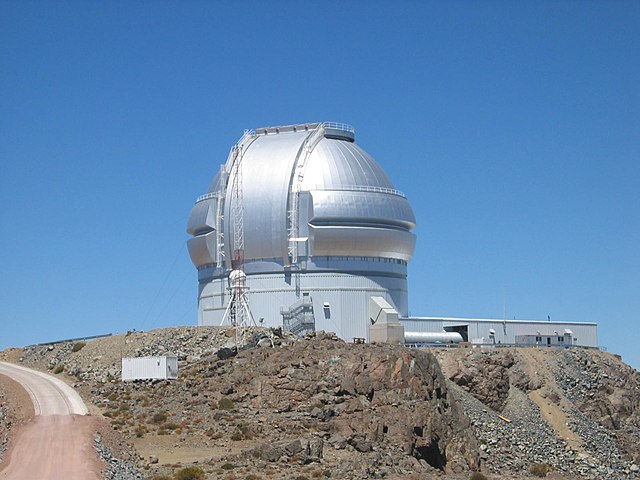Vera C. Rubin Observatory
The Vera C. Rubin Observatory, previously referred to as the Large Synoptic Survey Telescope (LSST), is an astronomical observatory currently under construction in Chile. Its main task will be carrying out a synoptic astronomical survey, the Legacy Survey of Space and Time. The word synoptic is derived from the Greek words σύν and ὄψις, and describes observations that give a broad view of a subject at a particular time. The observatory is located on the El Peñón peak of Cerro Pachón, a 2,682-meter-high mountain in Coquimbo Region, in northern Chile, alongside the existing Gemini South and Southern Astrophysical Research Telescopes. The LSST Base Facility is located about 100 kilometres (62 mi) away from the observatory by road, in the town of La Serena. The observatory is named for Vera Rubin, an American astronomer who pioneered discoveries about galaxy rotation rates.

Artist's conception of the LSST inside its dome. The LSST will carry out a deep, ten-year imaging survey in six broad optical bands over the main survey area of 18,000 square degrees.
The L1 lens for the LSST, 2018
The LSST primary/tertiary mirror successfully cast, August 2008.
Optics of the LSST Telescope.
The Gemini Observatory comprises two 8.1-metre (26.6 ft) telescopes, Gemini North and Gemini South, situated in Hawaii and Chile, respectively. These twin telescopes offer extensive coverage of the northern and southern skies and rank among the most advanced optical/infrared telescopes available to astronomers. (See List of largest optical reflecting telescopes).
Gemini North in Hawaii and Gemini South in Chile
Image: Gemini Observatory at sunset
Gemini North on the summit of Hawaii's Mauna Kea
Gemini South, on Cerro Pachón in the Chilean Andes








